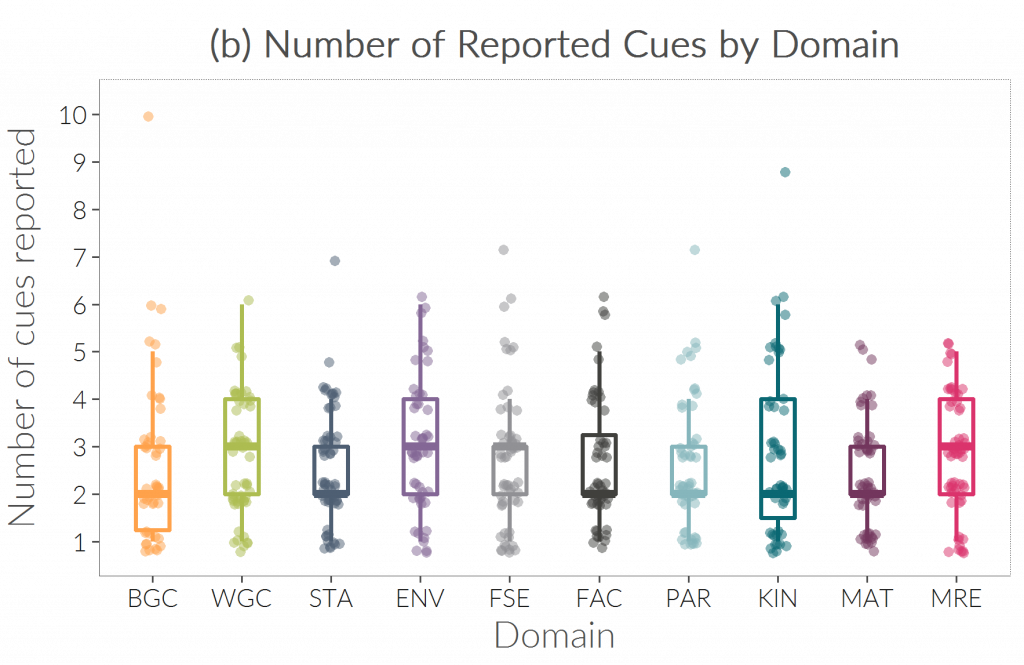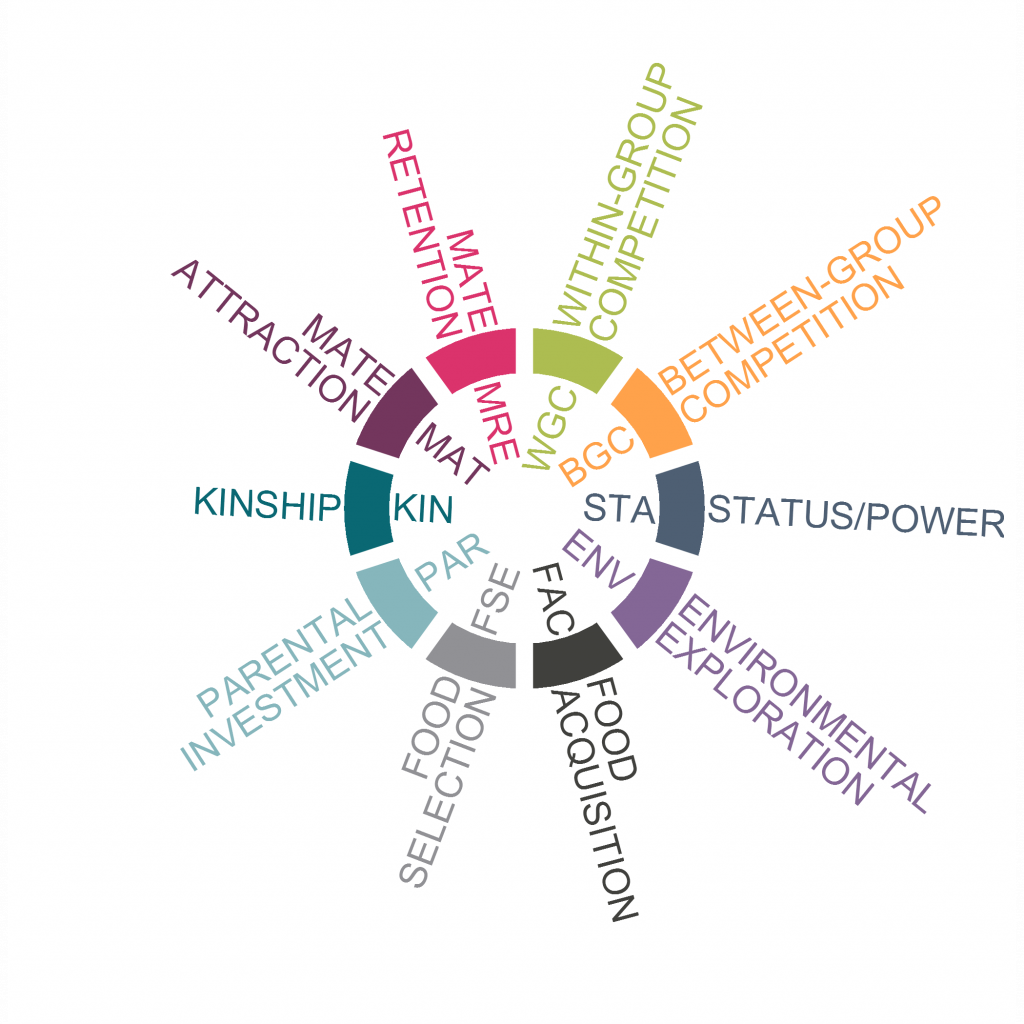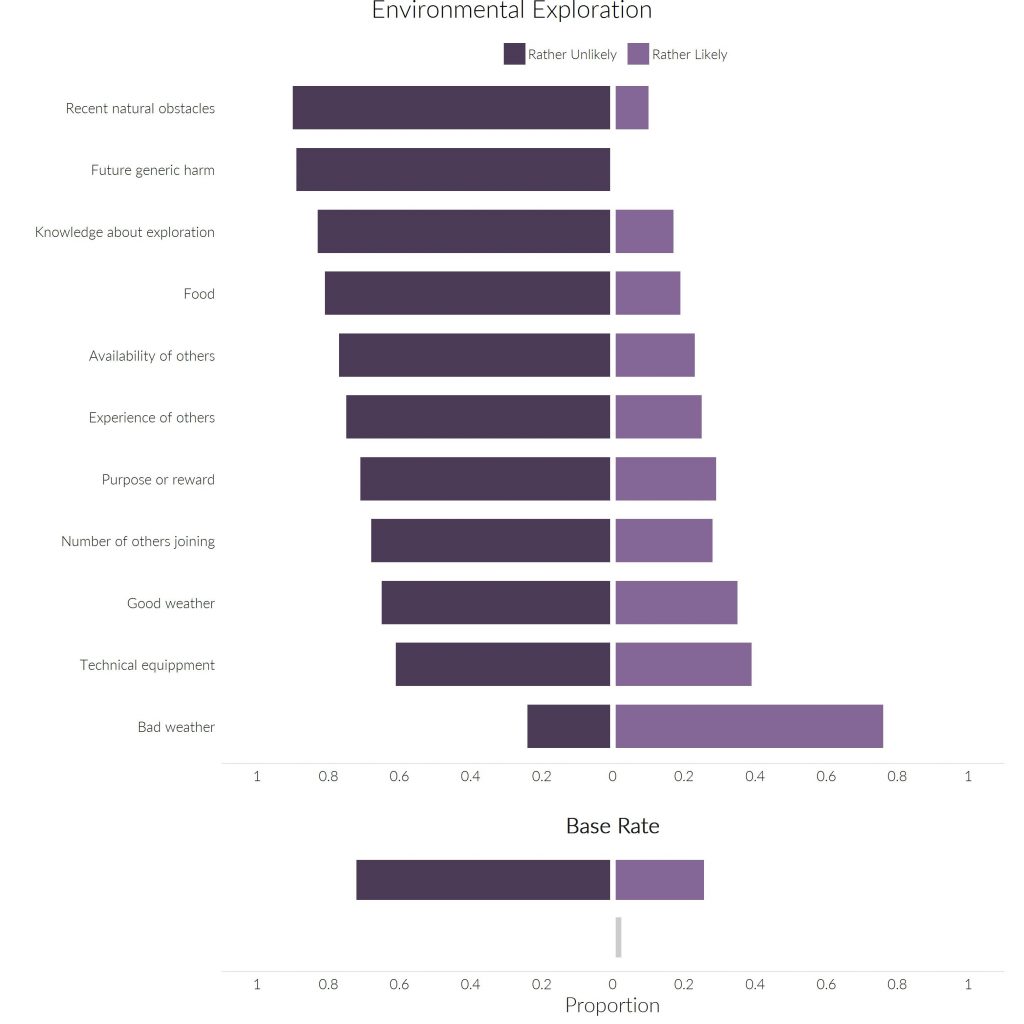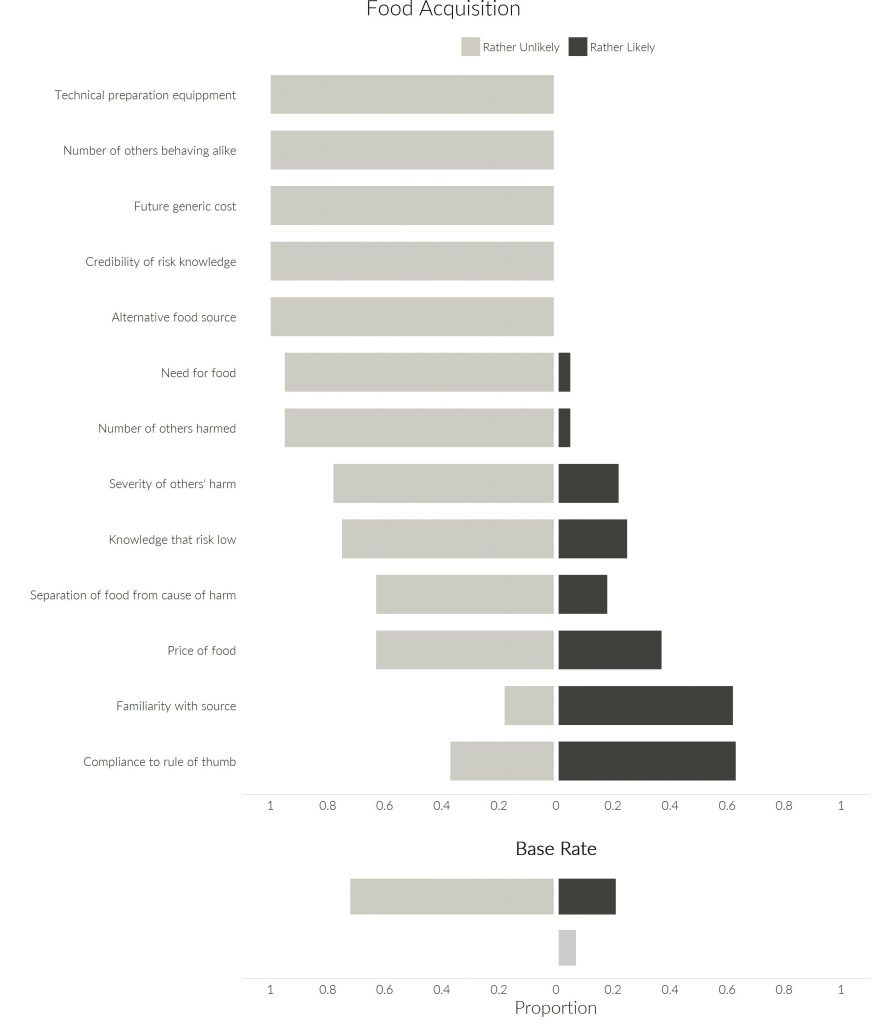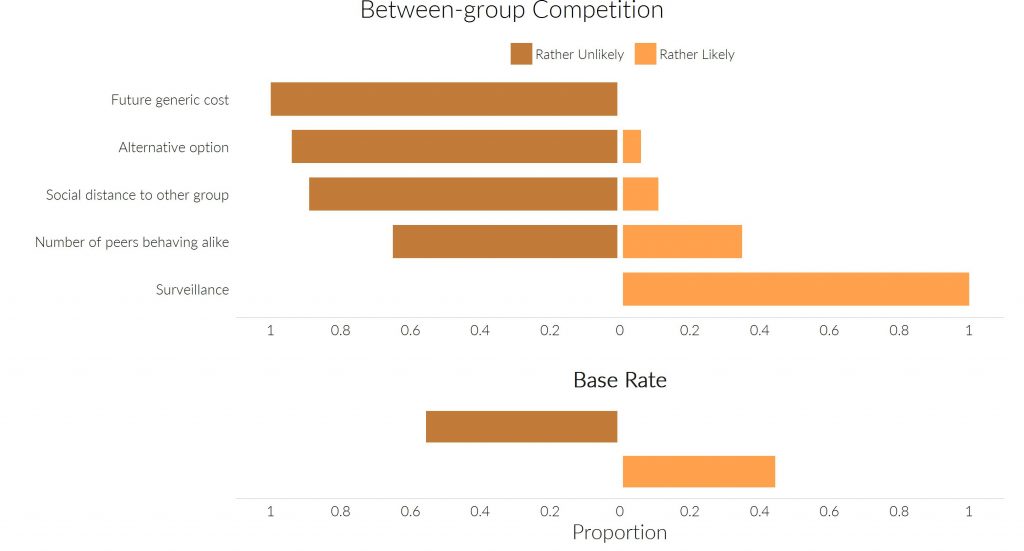Topic
Risk behavior
Risk perception influences people’s decisions in everyday life
Setup
Design
R
Realized in R-Statistics, JavaScript, and Qualtrics
Modeling Risk perception Across ten Domains
Finding the drivers of health risk and other real-life risk perceptions
Human behavioral risk-seeking tendencies differ across areas of life: health risks of medical procedures are perceived differently from economic risks of stock investments and again from social risks when initiating a divorce. How can such behavioral differences be reliably produced by the cognitive system? We answered this question using a large sample of text sources and machine-learning and statistical analyses.
You can read the scientific paper in HumEvoBeh.
